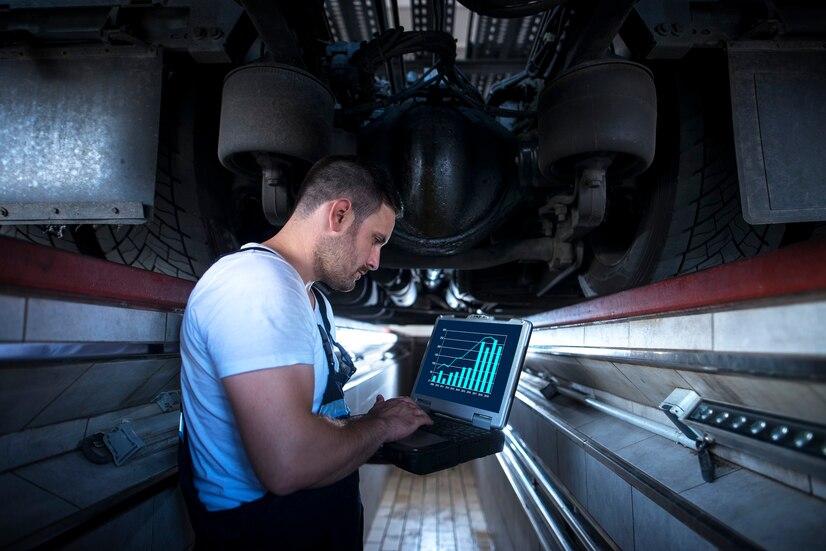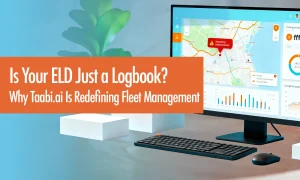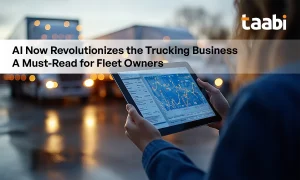The automotive industry is perpetually on the cusp of technological evolution. Under recent advancements, it has embraced machine vision as a pivotal tool in revolutionizing vehicle health monitoring and maintenance. Machine vision is the capability of computers to ‘see’ and interpret visual information, much like the human eye but with greater precision and consistency. This technology’s integration into the automotive sector marks a significant leap in how vehicles are inspected, maintained, and managed.
What do we mean by machines can see?
Well, machines can’t, “see”, see, per se; rather they can establish a complex network between innumerous connected, real-time, data-points. And, process & analyze, using advanced algorithms and computational tools, the real-time relationships between various data points on this network to deliver a vision-like insight. This processing of big data from IoT, allows machines to reveal trends and anomalies that were otherwise missing in traditional methods of issue analysis.
In the past, vehicle health monitoring and maintenance relied heavily on manual inspections—a process often marred by human error and inconsistency. Machine vision systems, however, bring about an unprecedented level of accuracy and reliability. These systems use advanced cameras and sensors to capture and analyze images of vehicle parts. This data, processed through sophisticated algorithms, can detect even the minutest anomalies that might go unnoticed by the human eye.
The application of machine vision in vehicle health monitoring doesn’t just stop at identifying problems. It extends to predictive maintenance, where the technology can forecast potential issues before they become significant problems. This predictive capability ensures that vehicle health monitoring is proactive rather than reactive, leading to reduced downtime, increased safety, and enhanced performance.
This transformative technology is reshaping the very fabric of the automotive industry. By integrating machine vision into vehicle health monitoring systems, manufacturers and service providers are not only streamlining the inspection process but also setting a new standard in vehicle maintenance. The result is a more efficient, accurate, and cost-effective approach to keeping vehicles in their best condition, ultimately benefiting manufacturers, service providers, and vehicle owners alike.
Key technologies that make futuristic machine vision a present reality
- High-Resolution Cameras and Imaging Sensors: These are the eyes of the machine vision system. High-resolution cameras capture detailed images of vehicle components, allowing for precise analysis. The imaging sensors can detect a range of issues, from surface defects to deeper structural problems, crucial for comprehensive vehicle health tracking.
- Advanced Image Processing Algorithms: After image capture, these algorithms interpret the data. They can distinguish between normal wear and actual defects, making them integral to vehicle health monitoring. These algorithms are continually evolving, becoming more sophisticated in identifying a wider range of issues.
- Machine Learning and Artificial Intelligence (AI): These technologies enable the system to learn from past inspections, improving its accuracy over time. AI algorithms can predict potential failures, contributing significantly to iot predictive maintenance. This is especially beneficial for fleet health monitoring, where the system can adapt to different vehicle types and usage patterns.
- Connectivity and IoT Integration: Machine vision systems are often integrated with IoT networks, allowing for real-time data transmission and analysis. This connectivity is essential for real-time vehicle health tracking and enables seamless communication between the inspection system and maintenance teams.
- Automated Reporting and Feedback Loops: Finally, the system generates detailed reports on vehicle conditions. These reports are used for immediate maintenance actions and long-term fleet health monitoring strategies.
The Applications of Machine Vision in Vehicle Part Inspection
Real-Time Component Analysis
1. Engine and Transmission Inspection
2. Tire and Brake Analysis
Predictive Maintenance
1. Data-Driven Maintenance Decisions
2. Customized Maintenance Schedules
Quality Control in Manufacturing
1. Ensuring Component Quality
2. Assembly Line Verification
Advanced Diagnostics
1. Electrical and Electronic Systems Check
2. Structural Integrity Analysis
Enhancing Customer Experience
1. Transparent Service Reports
2. Personalized Recommendations
Embracing the Future with Taabi's Advanced Vehicle Health Management Solutions
By choosing Taabi, businesses can expect:
- Enhanced accuracy and efficiency in vehicle inspections.
- Reduced maintenance costs and downtime through IoT predictive maintenance.
- Improved safety and reliability of vehicles.
- Data-driven insights for better fleet management and operational decisions.








